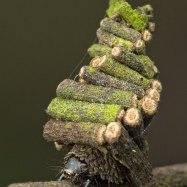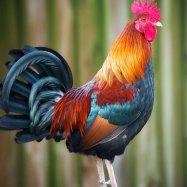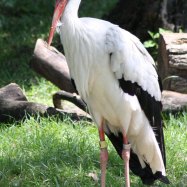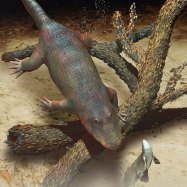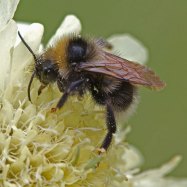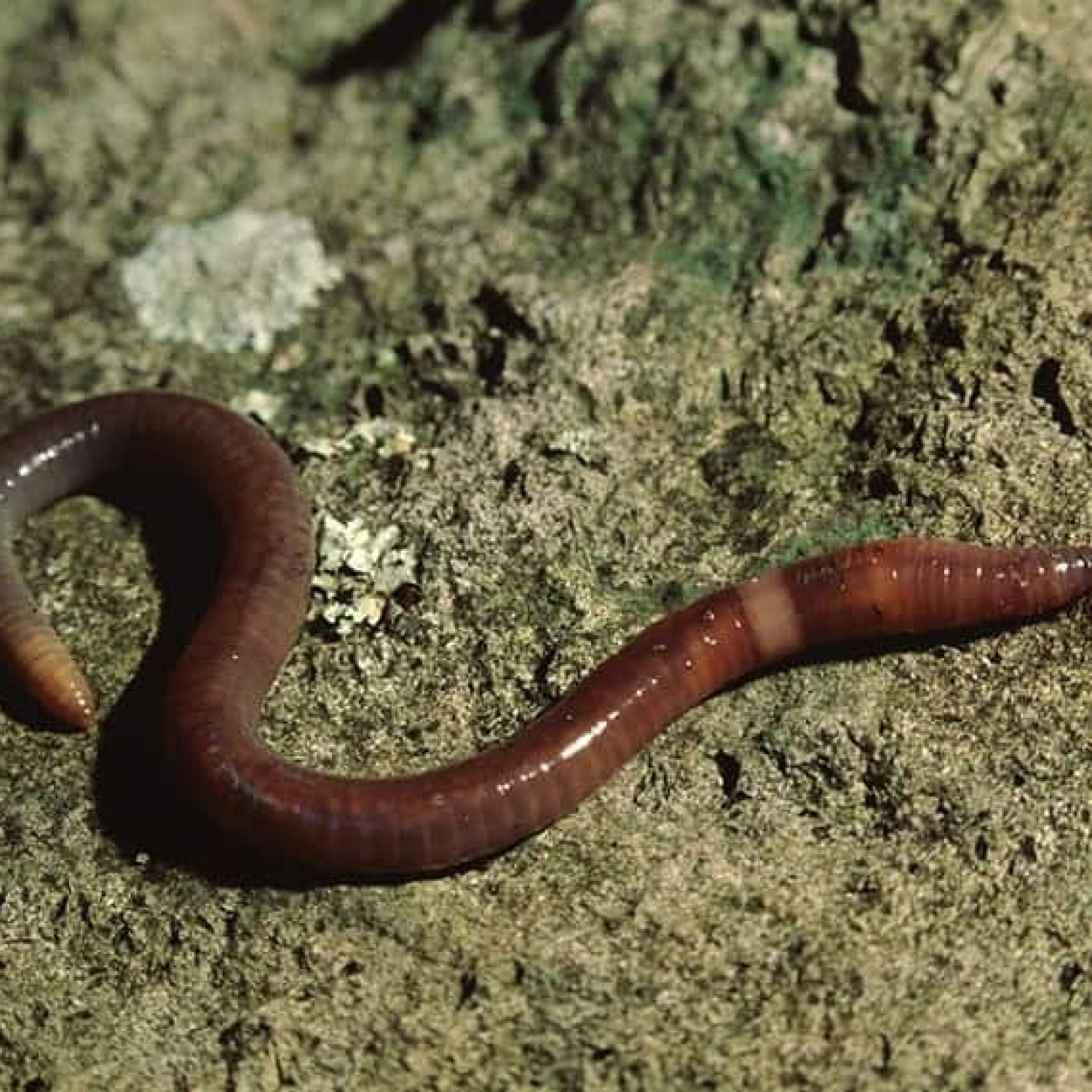
Earthworm
Approximately 10 cm (varies depending on the species)
Earthworms are fascinating creatures found in gardens, fields, and forests. Belonging to the family Lumbricidae, they have a long and cylindrical body, growing up to approximately 10 cm in length. These slimy creatures play an important role in enriching the soil and aiding plant growth. So next time you come across an earthworm, remember to appreciate their contributions to our ecosystem. #earthworms #gardening #soilenrichment
Animal Details Summary:
Common Name: Earthworm
Kingdom: Animalia
Habitat: Terrestrial
Uncovering the Fascinating World of Earthworms
When we think of intelligent animals, we tend to imagine creatures with complex brain structures such as dolphins, chimpanzees, or elephants. But there is a group of animals that may surprise you with their intelligence and complexity – earthworms.Scientifically known as Lumbricus terrestris, earthworms have been living on Earth for millions of years and play a vital role in maintaining the balance of our ecosystems. These little creatures may seem insignificant, but they are essential for our planet's health Earthworm. Let's dive into the fascinating world of earthworms and learn more about these often-overlooked animals.
The Basics
Earthworms belong to the Animalia kingdom and the Annelida phylum, which includes segmented worms. They are also classified under the Clitellata class and Haplotaxida order. The earthworm's closest relatives are leeches and marine worms.
There are over 6,000 species of earthworms globally, found in a variety of habitats, from gardens and fields to forests and wetlands. They are found all over the world, except in extreme climates such as deserts and polar regions. Earthworms have been introduced into new areas through human activity, such as agriculture and composting.
Habitat
Earthworms are terrestrial animals, which means they live on land. They prefer moist, dark, and cool environments, such as soil, compost, and decaying matter Edible Frog. You can find them in gardens, fields, forests, and even in our own backyards.They play a vital role in maintaining the health of our soil. Earthworms are often referred to as "ecosystem engineers" because they improve soil structure, water drainage, and nutrient cycling. They also aerate the soil by burrowing through it, allowing air to penetrate and maintaining a healthy balance of microorganisms.
Feeding Method
Earthworms are detritivores, which means they feed on dead plant and animal matter. They have a powerful digestive system that breaks down organic matter into smaller particles that can be easily absorbed. Earthworms are essential in the process of composting, as they eat and break down organic materials, transforming them into nutrients for plants and other organisms.Their feeding habits also help in controlling pests and diseases in plants, making them beneficial for agriculture and gardening.
Physical Characteristics
Earthworms have a unique body shape that sets them apart from other animals. They are long and cylindrical, with no arms or legs. On average, they grow to about 10 cm in length, but some species can reach up to a meter long.Their bodies consist of segments, called annuli, which help them move through the soil. Earthworms have tiny, stiff bristles, called setae, on each segment, which they use for movement and grip. These setae also help them sense their surroundings and protect them from predators.
Coloration
Earthworms have a delicate pink, reddish-brown, or brown color, depending on the species. This coloration helps them blend in with their surroundings, making them less visible to predators.However, their color may vary depending on their diet, habitat, and even genetics. Some earthworms may have a more vibrant color, such as green or blue, due to a special pigment in their body called bilirubin.
Discovering the Intelligence of Earthworms
When we think of intelligent animals, we often think of those with complex brains, capable of problem-solving and advanced cognitive abilities. However, earthworms have a surprising level of intelligence that often goes unnoticed.One of the most impressive abilities of earthworms is their regenerative capabilities. If an earthworm loses a segment of its body, it can regrow that segment and even a new head. This extraordinary ability not only helps them recover from injuries but also aids in their reproduction.
Another interesting aspect of their intelligence is their communication skills. Earthworms can communicate with each other through touch and vibrations. They use their setae to exchange information about their surroundings, such as the presence of food, danger, or potential mates. They can also communicate through chemical signals by releasing pheromones to attract mates or warn others of danger.
Earthworms also have a memory that allows them to learn and remember patterns in their environment. They can learn to avoid harmful substances or predators and remember where they found food, creating internal maps of their territory.
The Role of Earthworms in Our Ecosystem
Earthworms are vital for the health of our planet. They play a crucial role in enhancing the soil's fertility, facilitating plant growth, and cycling nutrients. Without them, our ecosystems would struggle to function correctly, and our planet would suffer.As mentioned earlier, earthworms are responsible for improving soil structure. They eat and digest decaying organic matter, breaking it down into smaller particles and returning vital nutrients to the soil. This process increases soil aeration, making it easier for plant roots to grow and absorb nutrients.
Their burrowing also helps to prevent soil erosion by stabilizing the soil and creating channels for water to drain through. This prevents floods and helps to purify the water and maintain its balance.
Earthworms also have a significant impact on plant growth. Their digestive system breaks down organic matter and releases essential nutrients such as nitrogen, potassium, and phosphorus that plants need to grow. They also create tunnels in the soil, allowing plant roots to grow deep and access nutrients and water efficiently.
Threats to Earthworms
Despite their essential role in our ecosystems, earthworm populations are facing threats that are putting their survival at risk. Some of the main threats include habitat loss, pollution, and overexploitation.Urbanization and agriculture have led to a loss of earthworm habitats as forests are cleared, and fields are treated with chemicals. This not only affects earthworm populations but also has a broader impact on soil health and biodiversity.
Chemical pollution from pesticides and other harmful substances can also have a detrimental effect on earthworms. Due to their sensitive skin, they can easily absorb toxins from their environment, causing them harm.
Overexploitation is another significant threat to earthworms. Some species are commercially harvested for use as fishing bait, leading to a decline in their numbers. This not only affects the earthworm population but also disrupts the balance of our ecosystems.
The Importance of Protecting Earthworms
As we can see, earthworms play a vital role in maintaining the health of our planet, and their decline can have severe consequences. It is essential to take measures to protect these tiny creatures and ensure their survival for generations to come.One way to help is by encouraging natural gardening practices. Using organic fertilizers and avoiding chemical pesticides can create a healthy environment for earthworms. Composting is also a great way to recycle food and organic waste while creating a suitable habitat for earthworms.
Educating ourselves and others about the value of earthworms and the threats they face is also crucial. We can take small actions, such as avoiding overexploitation and advocating for their protection, to make a difference.
In Conclusion
Earthworms may not be the first animals that come to mind when we think of intelligence and importance. However, these little creatures have a significant impact on our planet's health and deserve our attention and protection.With their unique physical characteristics, remarkable intelligence, and vital role in maintaining the balance of our ecosystems, earthworms truly are fascinating animals. Let's appreciate and protect them, so they can continue to thrive and contribute to the health of our planet.

Earthworm
Animal Details Earthworm - Scientific Name: Lumbricus terrestris
- Category: Animals E
- Scientific Name: Lumbricus terrestris
- Common Name: Earthworm
- Kingdom: Animalia
- Phylum: Annelida
- Class: Clitellata
- Order: Haplotaxida
- Family: Lumbricidae
- Habitat: Terrestrial
- Feeding Method: Detritivore
- Geographical Distribution: Worldwide
- Country of Origin: Not Applicable
- Location: Gardens, fields, forests
- Animal Coloration: Pink, reddish-brown, brown
- Body Shape: Long and cylindrical
- Length: Approximately 10 cm (varies depending on the species)
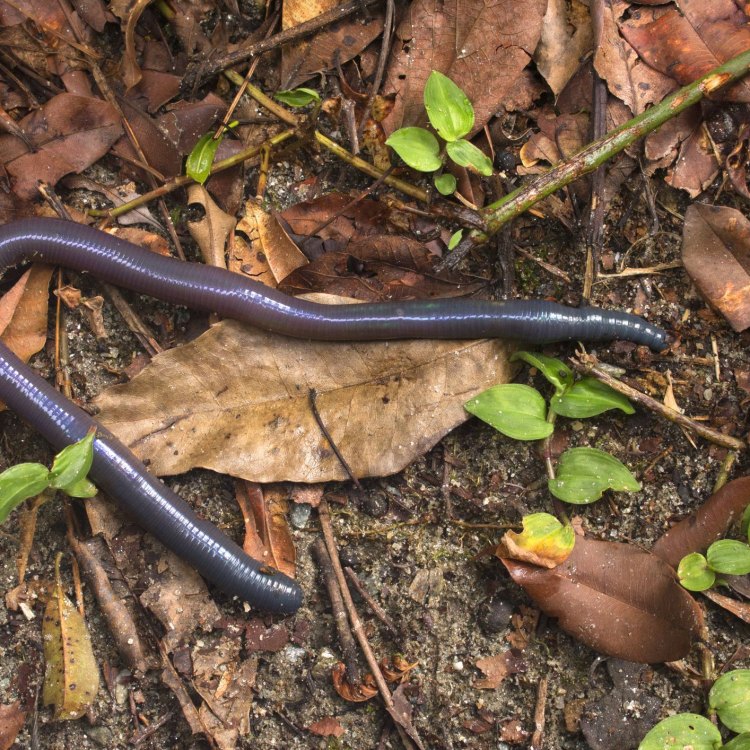
Earthworm
- Adult Size: Varies depending on the species
- Average Lifespan: 2 to 7 years
- Reproduction: Hermaphroditic (each individual has both male and female reproductive organs)
- Reproductive Behavior: Earthworms reproduce through copulation where two individuals align themselves and exchange sperm.
- Sound or Call: No specific sound or call
- Migration Pattern: None
- Social Groups: Solitary
- Behavior: Burrows in soil, helps in decomposition, aerates the soil
- Threats: Habitat destruction, pollution, use of chemical pesticides
- Conservation Status: Not assessed
- Impact on Ecosystem: Earthworms play an important role in soil fertility and nutrient cycling.
- Human Use: Used as bait in fishing, vermicomposting, and soil improvement
- Distinctive Features: Segmented body, clitellum, no eyes or ears
- Interesting Facts: Earthworms are hermaphroditic, meaning each individual has both male and female reproductive organs.
- Predator: Birds, mammals, reptiles, amphibians, and some invertebrates
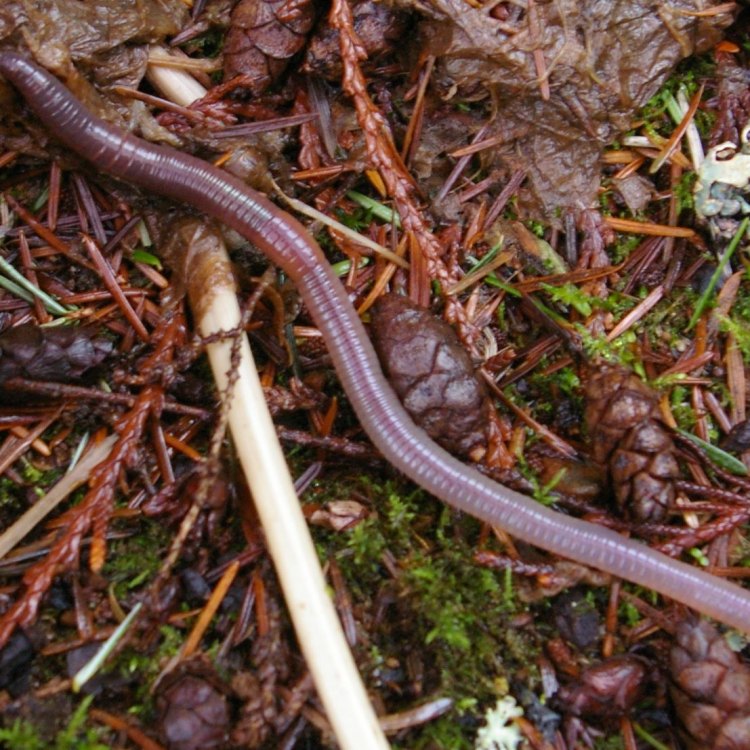
Lumbricus terrestris
The Mighty Earthworm: A Small Creature with a Big Impact
When you hear the word "earthworm," your mind may conjure up images of a slimy, squiggly creature often used as bait for fishing. However, these small creatures are much more than just fish food. With their segmented bodies and lack of eyes and ears, earthworms may seem like insignificant creatures. But in reality, they play a crucial role in our ecosystem and have unique features that make them fascinating creatures PeaceOfAnimals.Com. In this article, we dive deep into the world of earthworms to explore their distinctive features, interesting facts, and their impact on the environment.Meet the Earthworm
Earthworms fall under the order Lumbricidae, which is a family of invertebrates consisting of over 6,000 identified species. Their adult size varies depending on the species, with some being just a few centimeters long while others can grow up to several meters.Their average lifespan ranges from 2 to 7 years, although there are reports of some living up to 10 years. Unlike many other animals, earthworms do not have a fixed migration pattern. Instead, they tend to stay in one area, burrowing through the soil.
A Unique Reproductive System
One of the most interesting features of earthworms is their reproductive system. They are hermaphroditic, meaning each individual has both male and female reproductive organs. This reproductive system allows for self-fertilization, but earthworms still prefer to mate with another individual European Polecat.Reproduction in earthworms occurs through a process called copulation. During this process, two individuals align themselves with their ventral sides (the side facing the ground) touching and exchange sperm. Once fertilization occurs, each worm produces a cocoon containing several eggs. It takes about 2-3 weeks for the eggs to develop into small worms, which hatch out of the cocoon.
A Quiet Life with No Need for Communication
Unlike many other animals, earthworms do not have a specific sound or call. They communicate with others through chemical signals released into the soil. These signals allow them to locate each other for reproduction or avoid predators.As solitary creatures, earthworms do not form social groups or display any form of social behavior. They prefer to live on their own, except during mating, and are most active at night when the soil is moist.
The Unsung Heroes of Our Ecosystem
You may be wondering, what impact can a small, squishy creature like an earthworm have on our ecosystem? The answer is, a significant one. Earthworms play a crucial role in soil fertility and nutrient cycling, making them an essential part of the ecosystem.As they burrow through the soil, earthworms create tunnels that help with aeration, allowing oxygen to reach the plant roots. Their actions also help to improve the drainage and water retention capacity of the soil. This is especially important during heavy rainfall, as it prevents soil erosion.
Moreover, as they feed on decaying organic matter, earthworms contribute to the decomposition process, breaking down nutrients and making them more readily available for plants to absorb. This process also helps to enrich the soil with essential minerals, making it more fertile.
Threats to the Earthworm Population
Despite their vital role in our ecosystem, earthworm populations are facing threats from various human activities. Habitat destruction, primarily through deforestation, has a significant impact on earthworms, as it disrupts their burrowing and feeding patterns. Intensive farming practices, such as tilling and use of heavy machinery, also contribute to soil compaction, making it harder for earthworms to move freely.Moreover, the use of chemical pesticides in agriculture poses a significant threat to these creatures. Pesticides can kill earthworms directly or indirectly by reducing the abundance of their food source or disrupting the soil's natural balance. This can have a cascade effect on the entire ecosystem, as earthworms are an essential food source for many other animals.
Earthworm Conservation
Despite the crucial role earthworms play in our ecosystem, they are currently not assessed for conservation status. However, efforts are being made to conserve these creatures, which have been dubbed "ecosystem engineers" due to their significant impact on the environment.One way to support earthworm conservation is by promoting sustainable farming practices that minimize the use of chemical pesticides and maintain soil health. Homeowners can also contribute by avoiding the use of harmful chemicals in their gardens and composting to support earthworm populations.
Human Use of Earthworms
Aside from their ecological importance, earthworms also have several human uses. As mentioned earlier, they are commonly used as bait for fishing due to their high protein content. Additionally, they are also used in vermicomposting, a method of composting using worms to break down organic waste into fertilizer. This method is gaining popularity as a sustainable way to manage waste and improve soil health.Earthworms are also used for soil improvement through a process called vermiculture. In this process, worms are fed a specific diet to produce nutrient-rich compost, which is then added to the soil to enhance its fertility.
Distinctive Features of the Earthworm
Despite their simple appearance, earthworms have several distinctive features that make them unique creatures. One such feature is their segmented body, which allows them to move and burrow through the soil. Another characteristic is the clitellum, a light-colored band on their body responsible for producing the cocoon during reproduction.Moreover, earthworms do not have eyes or ears, but they do have photoreceptors and chemoreceptors, which help them sense light and chemical signals. This is why they are most active at night when the soil is moist, as it is a favorable environment for them to detect food and mates.
Interesting Facts about Earthworms
We've already covered some interesting facts about earthworms, such as their reproductive system and lack of eyes and ears. But here are a few more fascinating facts about these small creatures:- There are about 1 million earthworms in one acre of fertile land.
- Earthworms can regenerate lost segments, making them capable of surviving predators' attacks.
- They are found in every continent except for Antarctica.
- Earthworms have five hearts, which pump blood filled with oxygen and nutrients throughout their body.
- When earthworms mate, they form a ring around each other, with each individual's head touching the other's tail. They are then referred to as "love rings."
- In Chinese culture, earthworms are considered a symbol of good luck and prosperity.
Earthworm Predators
As with any other creature, earthworms have their fair share of predators. Birds, mammals, reptiles, amphibians, and some invertebrates, such as spiders and centipedes, all prey on earthworms. To protect themselves from these predators, earthworms have developed a few defense mechanisms.When threatened, earthworms can release a sticky mucus that can trap predators, making it difficult for them to escape. They also have bristles on their bodies that can irritate predators' mouths, making them think twice before attacking an earthworm again.
In Conclusion
Earthworms may appear unassuming at first glance, but they are truly remarkable creatures. Their unique reproductive system, important role in the ecosystem, and interesting facts make them fascinating creatures to learn about. While they may face threats from human activities, we can all contribute to their conservation by adopting sustainable practices and appreciating the vital role they play in our environment. So the next time you come across an earthworm, take a moment to appreciate its significance and impact on our planet.
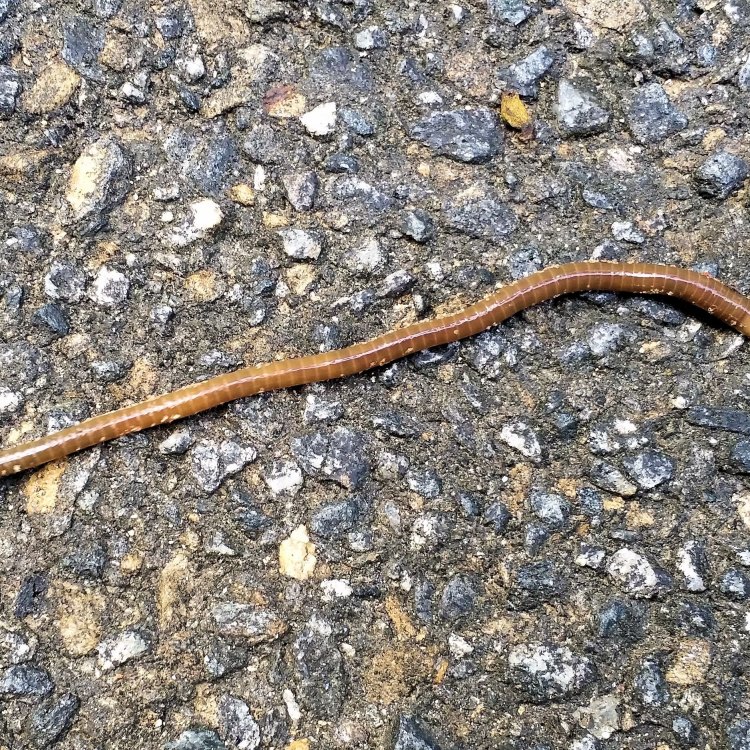
Uncovering the Fascinating World of Earthworms
Disclaimer: The content provided is for informational purposes only. We cannot guarantee the accuracy of the information on this page 100%. All information provided here may change without prior notice.

